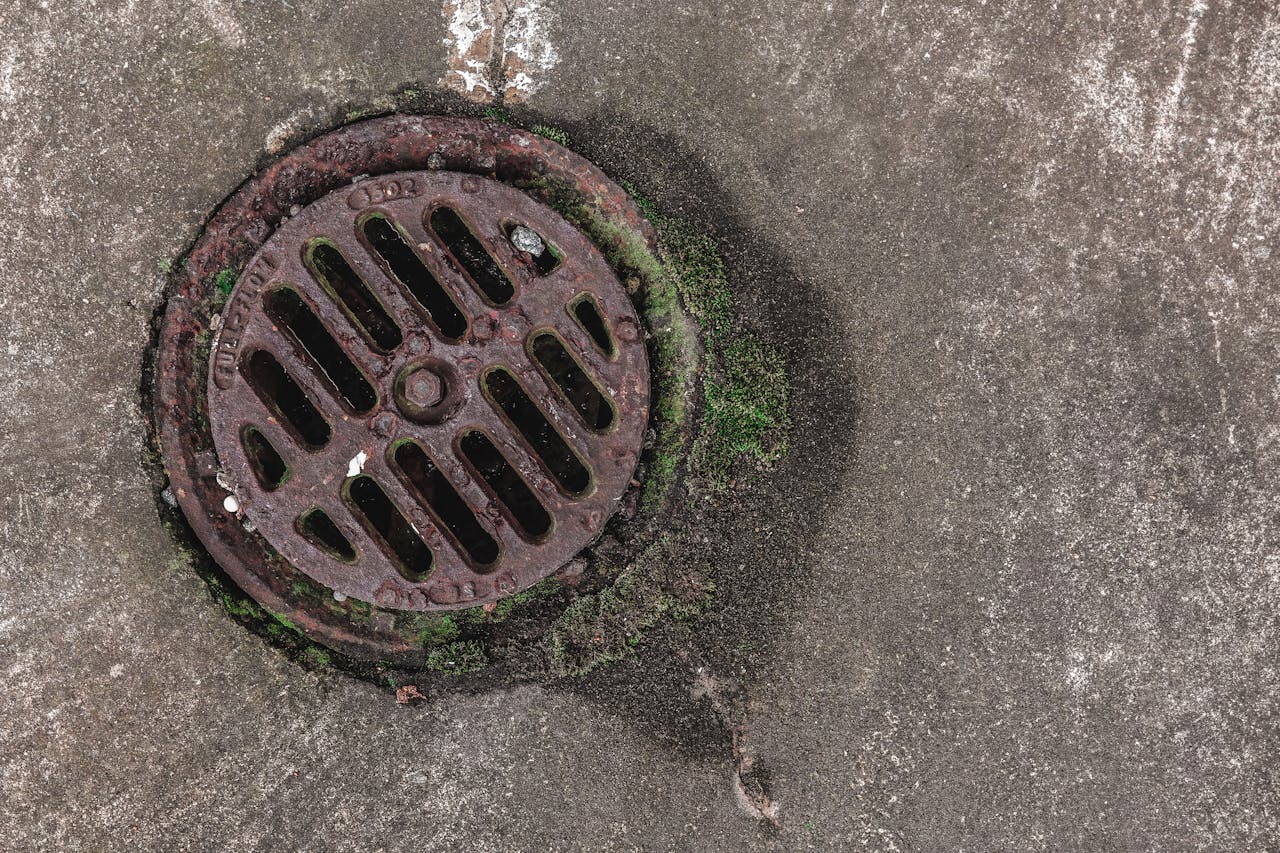- Proper preparation, including locating your septic tank and ensuring clear access, helps streamline the pumping process.
- Understanding soil conditions and weather impacts can prevent septic issues and improve system efficiency.
- J & J Septic & Sewer Cleaning provides expert septic maintenance to keep your system in top condition.
Regular septic tank pumping and cleaning are essential for keeping your system in top condition. Over time, waste accumulates in the tank, leading to blockages, slow drainage, and even system failure if not properly maintained.
Preparing your property before a scheduled service ensures a smooth and efficient process, helping technicians complete the job quickly while reducing the risk of unexpected complications. Here’s how you can get your property ready for septic tank pumping and cleaning.
Understand the Importance of Septic Tank Maintenance
Your septic system is responsible for collecting and treating wastewater from your home. Solid waste settles at the bottom of the tank, forming sludge, while lighter materials float to the top as scum. Without regular pumping, these layers build up and reduce the tank’s efficiency, leading to potential failures. Routine cleaning removes accumulated waste, preventing blockages, promoting proper drainage, and extending the life of the system.
Keeping up with maintenance also protects your property from unpleasant odors, backups, and costly repairs while preventing contamination of groundwater and nearby water sources. A well-maintained septic system is not only essential for your home’s functionality but also contributes to a healthier environment.
Know Your Septic Tank’s Location
Before your service appointment, it’s important to know exactly where your septic tank is located. If you’re unsure, check property records or installation diagrams. You can also look for signs such as septic covers, risers, or areas of lush grass growth that may indicate the tank’s placement. If you need assistance, a professional can use specialized equipment to locate it.
Being aware of your tank’s position helps you monitor its condition, allowing you to notice potential issues such as standing water, foul odors, or unusually fast-growing grass, which may indicate a leak. Knowing the location also allows the service crew to work more efficiently and prevents unnecessary delays.
Clear the Area Around the Tank
Technicians need unobstructed access to the septic tank to perform the pumping and cleaning process effectively. Remove any outdoor furniture, vehicles, or large objects that may block access to the tank lid. Trim overgrown grass, bushes, or tree branches that could get in the way.
If you have pets, keep them indoors to ensure their safety and prevent disruptions. A clear workspace allows service professionals to complete the job efficiently, reducing labor time and potential costs. Additionally, ensuring easy access to your tank minimizes the risk of accidental damage to landscaping or outdoor structures during the service.
Check for Signs of Septic Issues
A quick inspection of your septic system before the scheduled service can help catch potential problems early. Look out for these warning signs:
- Slow Drains: If sinks, showers, or tubs are draining sluggishly, your system may be struggling to process wastewater.
- Gurgling Pipes: Unusual noises coming from your plumbing can indicate a blockage or excess pressure in the system.
- Sewage Backups: Wastewater backing up into sinks, tubs, or toilets is a clear sign of an overloaded or failing system.
- Foul Odors: Strong sewage smells around the tank or drain field may suggest a clog or leach field failure.
- Standing Water: Puddles or soggy areas near your tank or drain field can signal a leak or oversaturation.
- Lush, Green Patches: Grass growing significantly greener or faster than surrounding areas may mean excess nutrients from a leaking tank are fertilizing the soil.
If you notice any of these issues, inform your septic service provider ahead of time. They can assess the situation, address minor concerns during pumping, and recommend repairs if needed. Catching septic problems early helps prevent costly damage and keeps your system running efficiently.
Reduce Water Usage Before Pumping
Excessive water usage before your scheduled pumping can put unnecessary strain on your septic system. To prepare, avoid running dishwashers or washing machines on the day of service. Limit long showers and minimize water use in sinks and toilets. Fix any leaking faucets or running toilets to prevent excess water from entering the system.
By reducing water input, you help ensure the tank is as stable as possible, allowing technicians to pump and clean it more efficiently. Keeping water use to a minimum also prevents waste from mixing excessively with liquid, making it easier to remove solids and ensure a more thorough cleaning.
Ensure Easy Access to the Pumping Truck
Septic service trucks need sufficient space to park and operate their equipment. Make sure there is a clear path from the street to your septic tank. Move any vehicles or obstacles that may block the truck’s access. If you have a gated property, unlock the gate or provide access instructions ahead of time.
If technicians cannot easily reach the tank, they may need to use additional equipment, increasing service time and potential costs. Preparing your property in advance allows the crew to work efficiently and complete the job with minimal disruptions.
What Happens During a Septic Tank Pumping?
Knowing what to expect during a septic tank pumping service can help you stay informed and ensure your system remains in top condition. Here’s a step-by-step breakdown of the process:
Inspection
The technicians start by locating and uncovering the septic tank. Once exposed, they inspect the tank’s condition, looking for cracks, leaks, and signs of excessive buildup. They may also check the inlet and outlet pipes to ensure wastewater is flowing properly and that there are no blockages.
Pumping
Using a specialized vacuum truck, the technicians remove the sludge, scum, and wastewater that have accumulated in the tank. This step is essential for preventing backups and keeping the system functioning efficiently. The frequency of pumping depends on factors such as household size, water usage, and the tank’s capacity.
Cleaning
In some cases, the technician will spray the tank’s interior with water to break up any remaining solid waste clinging to the walls. This ensures a more thorough cleaning and prevents the buildup of hardened sludge, which can reduce the tank’s efficiency over time.
Final Check
After the tank is emptied and cleaned, the technician performs a final inspection to make sure everything is in working order. They may check the drain field for signs of trouble, such as standing water or foul odors, which could indicate a larger issue. If any problems are detected, they will provide recommendations for repairs or additional maintenance.
By understanding the septic tank pumping process, homeowners can make informed decisions about system maintenance, recognize potential warning signs early, and ensure their septic system operates efficiently for years to come.

How Soil Conditions Affect Your Septic System
The type of soil surrounding your septic system plays a crucial role in its overall function. Soil acts as a natural filter, breaking down waste and allowing treated water to percolate safely into the ground. However, different soil types absorb and drain wastewater at varying rates. Sandy soil provides excellent drainage, reducing the risk of backups, while clay-heavy soil retains water, increasing the likelihood of oversaturation.
If your property has compacted or poorly draining soil, you may need additional drainage solutions to maintain an efficient system. Regular soil testing and consulting with a septic professional can help ensure your system is suited to your property’s conditions.
The Impact of Weather on Septic Tank Maintenance
Weather conditions can significantly impact the effectiveness of septic tank maintenance. Heavy rainfall can oversaturate the drain field, making it harder for wastewater to be absorbed properly, while freezing temperatures can cause pipes to freeze, increasing the risk of backups. To avoid complications, schedule septic maintenance during dry seasons whenever possible.
Homeowners should also take preventive measures such as insulating exposed pipes, directing runoff away from the drain field, and avoiding heavy vehicle traffic over the tank area to prevent soil compaction. Being mindful of how weather affects your septic system can help prevent emergency situations and keep it running efficiently throughout the year.
Post-Pumping Care
After your septic tank has been pumped and cleaned, it’s important to maintain good habits to keep the system functioning properly. Avoid flushing non-biodegradable items such as wipes, feminine hygiene products, and paper towels.
Stick to septic-safe cleaning products to preserve beneficial bacteria that help break down waste. Be mindful of grease and food waste disposal, as these materials can cause blockages in pipes and the drain field. Regularly inspect the area around your septic system for signs of standing water, unusual odors, or drainage problems.
Taking these precautions ensures your septic system remains in top condition between service appointments. Proper post-pumping care helps extend the lifespan of your system and minimizes the risk of costly repairs in the future.
Keep your septic system in top shape with professional pumping and cleaning from J & J Septic & Sewer Cleaning. Contact us today for reliable service that keeps your system running smoothly.

